The Internet has created incredible opportunities for artists to reach millions of people. But as the virtual venues expanded, the number of your competitors grew. Yes, Etsy, Shopify or blogs are all amazing platforms for putting your work out there – but how do you get people to see, let alone buy your works in such a huge crowd? All you need is a strategy on how to sell art online and that is exactly what you will find in this guide.
If you google how to sell art online, you will find plenty of more or less actionable advice on where to sell your work. But keep in mind that your website, Shopify store or blog are just places in the virtual world. People won’t visit them just because they are there. People don’t even know about them.
In the real world, a new coffee shop owner can put up a billboard and start word of mouth in the neighborhood. But in the virtual sphere, you have to be a bit more savvy and original. So this time, let’s discuss how to sell art online.
Establish an online presence
Establishing online presence comes down to creating your own website and online shop, as well as social media accounts. Now, I will quickly run you through that process – quickly, because, as I said, I want to keep an accent on strategy, rather than basic moves.
If you want a detailed guide on starting an online store, I strongly recommend that you read this article. You will find step-by-step instructions, suggestions, and pricing.
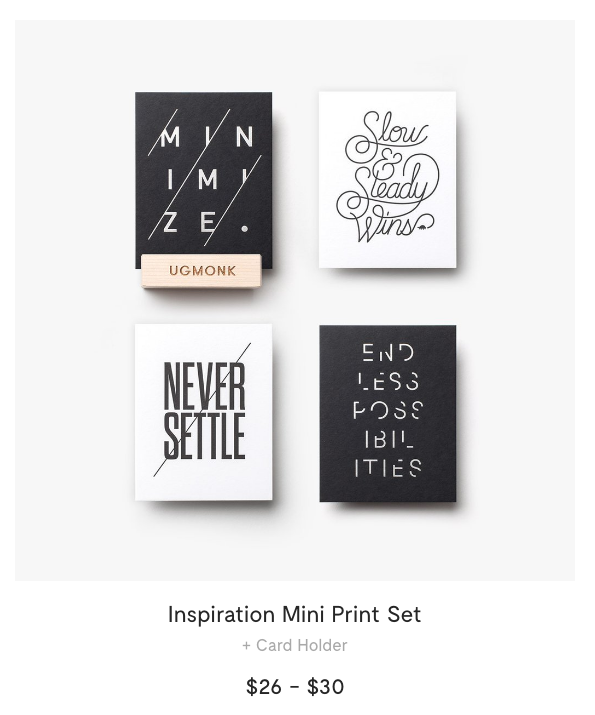
Creating your website/online shop doesn’t take any coding skills or hard work if you go for established e-commerce platforms such as Square or Shopify. Although some of these options come for free or for a reasonable monthly price, keep in mind that some of the initial set up fees (especially if you decide to take online payments) can rack up your initial expenses.
Step 1 – Create an online art store
E-commerce platform
Creating your website and online store to sell art is a straight line on platforms like Square or Shopify. Once you sign up for their service, the website guides you through the entire process of setting up your online art shop. Square is a free option, Shopify comes with a price tag of $29/month.
Both websites deliver the goods in terms of enabling people to look at your store and purchase the art pieces they like. With Square’s free option, you can set up your art shop, add products, create a website address, and go live in a matter of hours. However, Square’s plan does have its limitations in terms of design. On this platform, you can sell up to 50 artworks at a time.
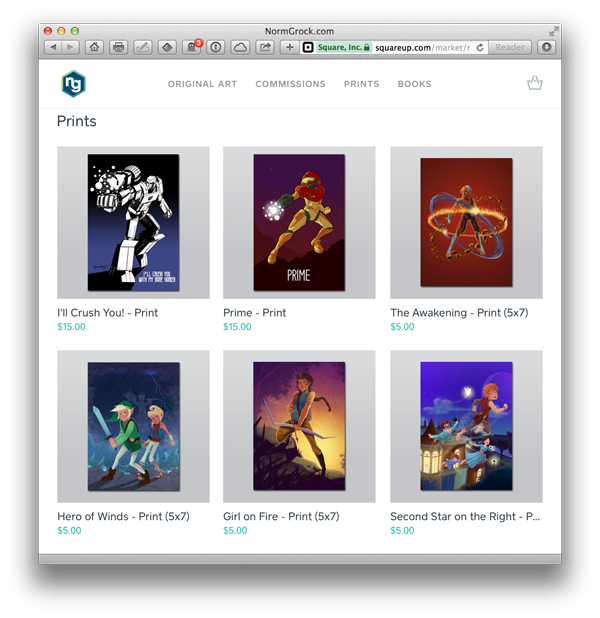
There aren’t plenty of options for customizing your store – all the items appear on a single web page. On the other hand, people can enlarge each item by clicking on it.
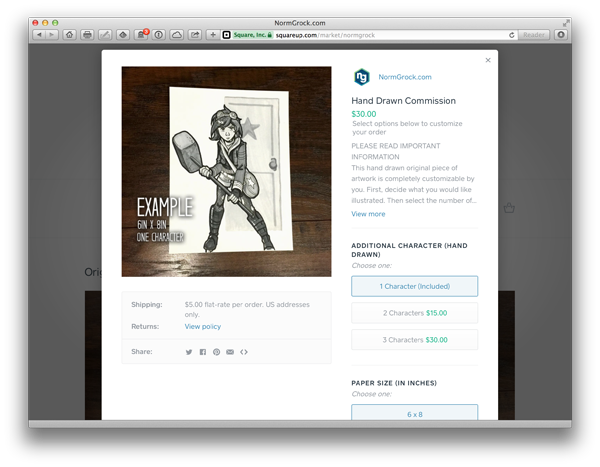
If you want to see a setup process, look at this manual written by a person who runs an online art store on Square.
If you are building your brand (which I strongly recommend), visual identity and sleek website design play a huge role in this process. For that, you’ll need a more versatile platform, which is where Shopify delivers. Here are some examples from Shopify powered art stores.
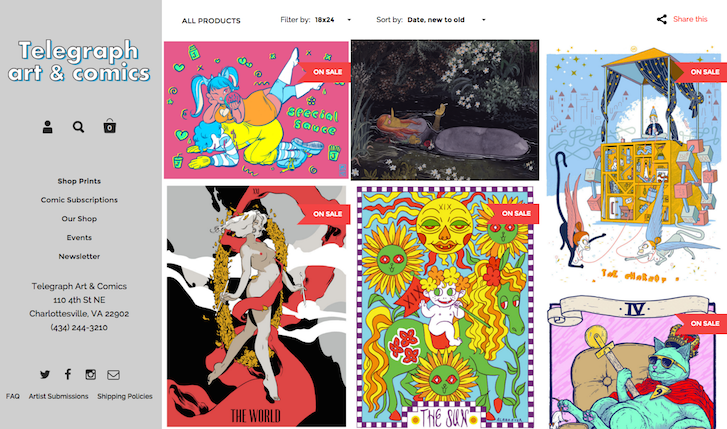
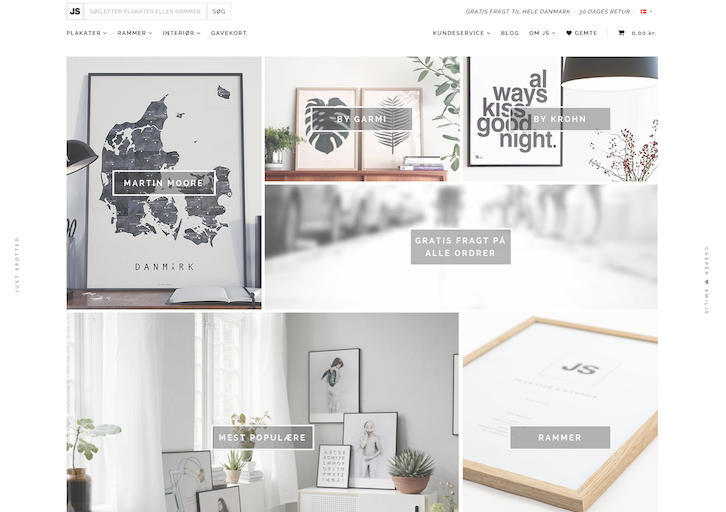
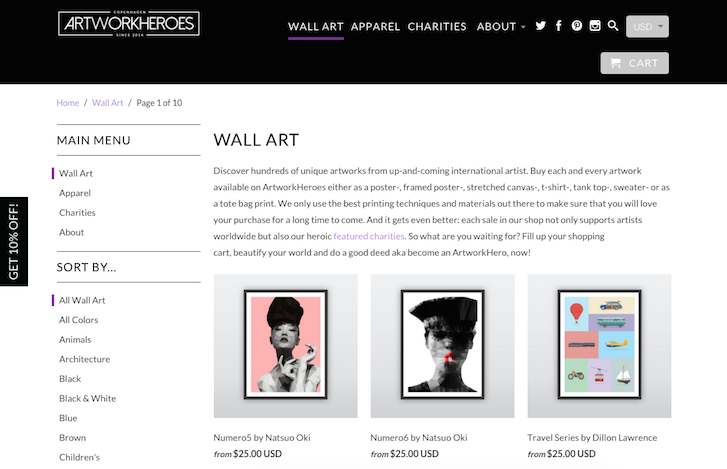
However, with its monthly fee and added processing fees, Shopify is a good choice for those who are already having some regular, higher-volume sales. My suggestion? Start with Square and move on to Shopify.
Your own website
Starting an online art store from scratch takes some coding and research skills because you want to make sure that your initial investment of time and money will pay off in the long run. If you go with the right service providers, you can afford a lot of flexibility and you won’t have to deal with the various transactions and monthly fees. Basically, when you host your own art store, you go through these steps:
- Choose the domain name
- Choose a hosting service
- Set up an SSL certificate
- Install an e-commerce software – free with PrestaShop, XCart, Magento Open Source.
- Sign up for a payment processor, payment gateway and merchant account
These are just basics – you will also have to work on website design or any additional website features. I recommend this option to tech-savvy, established artists.
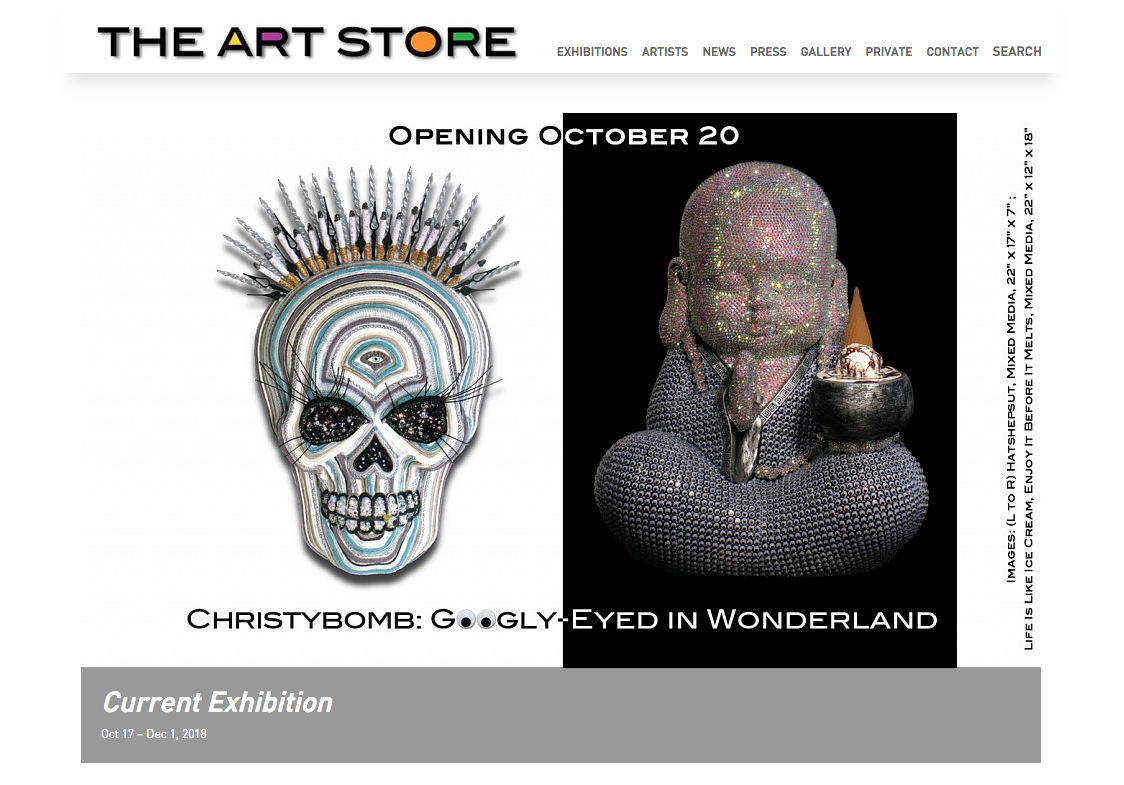
Online marketplaces
Amazon, eBay, Etsy are all great places for selling your art online. Much like e-commerce platforms, they carry the brunt of the sales process on their back – and in exchange for that, you pay monthly and commission fees.
For Etsy, you pay 20¢ monthly listing fee and 3.5% commission. This is the simplest and most straightforward option recommended for total beginners on a budget who are just starting to sell.
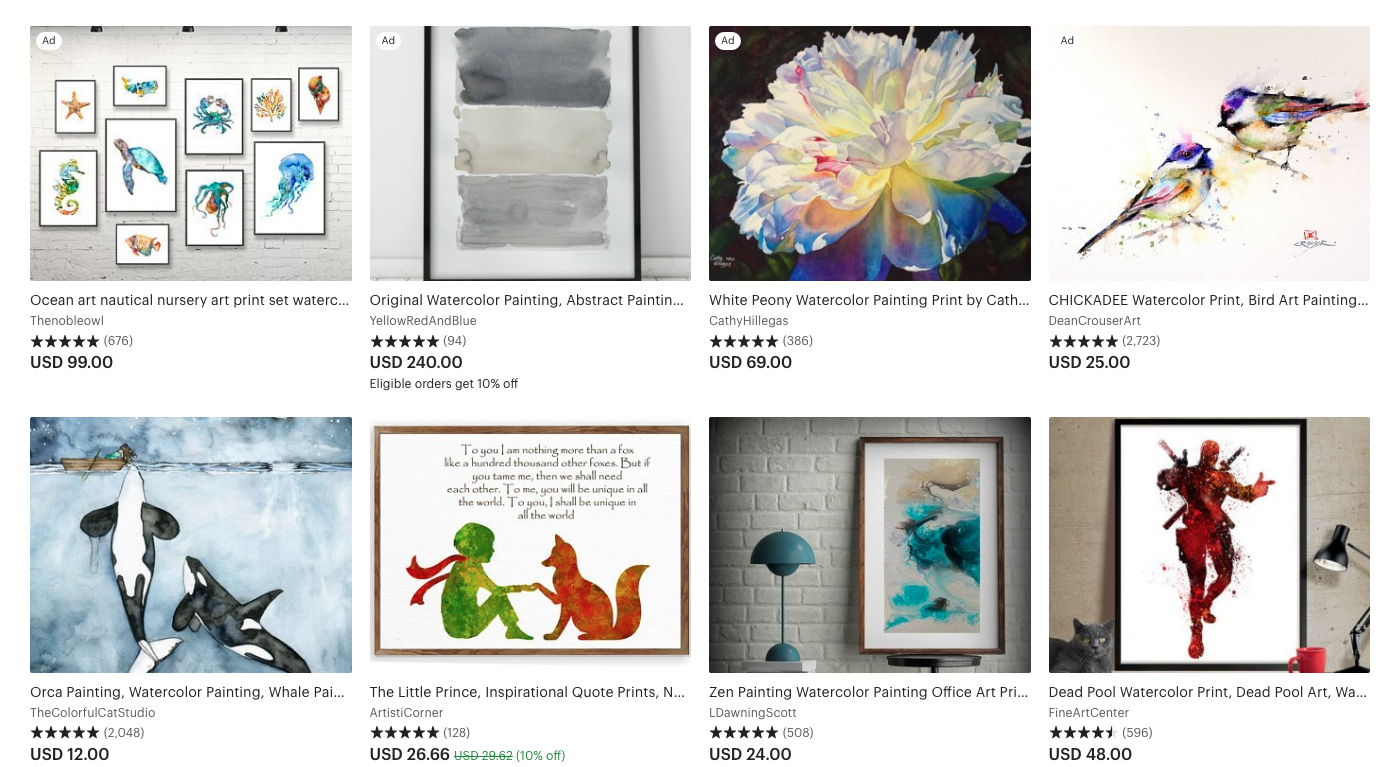
The main downside to these websites is that you get lost in the noise of millions of sales items. Etsy does make it a bit easier because it is an artsy-oriented marketplace, but the noise is pretty loud there as well. But don’t worry – you can work your way around it – keep reading.
Step 2 – Create social media accounts
When it comes to reaching people, you know that social networks are the way to go. Facebook, Instagram, Pinterest, Twitter are all amazing ways to find people and be found.
This type of presence comes for free, it thrives on engagement with your audience, potential and existing customers, and if you advertise wisely, they can be amazingly cheap and effective funnel leading towards your online store. To put it visually…
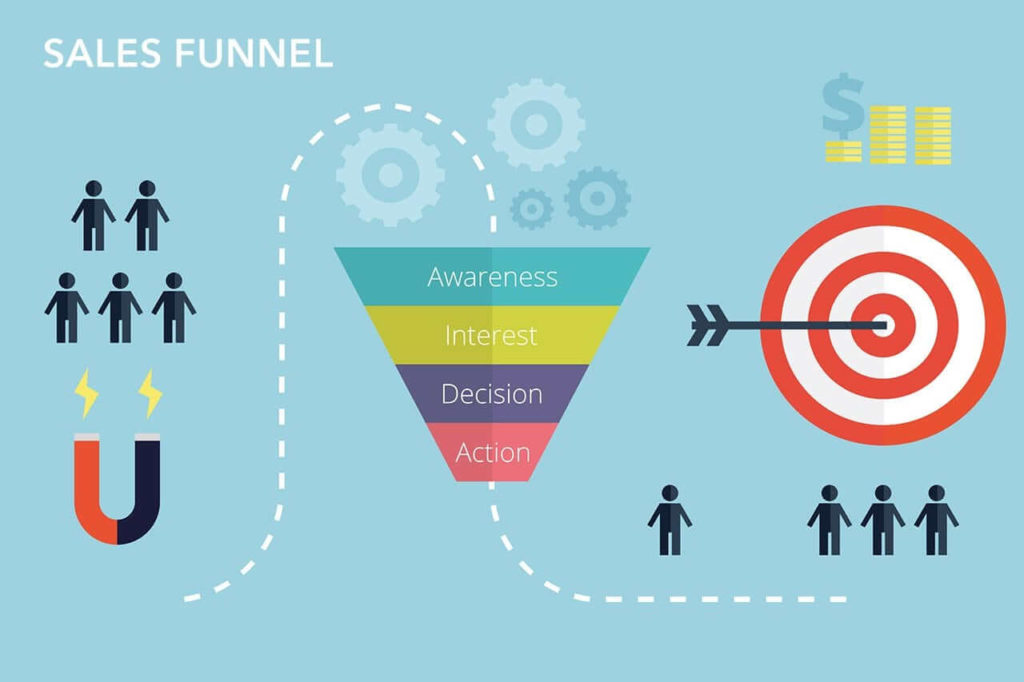
So, let’s see how you can do that.
Establish your marketing strategy
Selling art is not the same thing as selling software or shirts. It is a specific audience with its own preferences. What they have in common is that selling your artwork isn’t about convincing.
It is about impressing or connecting with your audience. So how do you advertise without running a classic advertisement? Here’s how.
Step 3 – Start a blog
What once started as an online journal of bored, regular people, by 2018 became one of the most effective and favored marketing strategies. Content marketing in the form of a blog is a way to effectively inform, educate and entertain your audience.
It is a slow-burning tactic that does not push traditional sales pitches down your audience’s throat. Instead, it nurtures a trusting relationship that will eventually lead to the sale. Later, you can use your blog on many other marketing platforms.
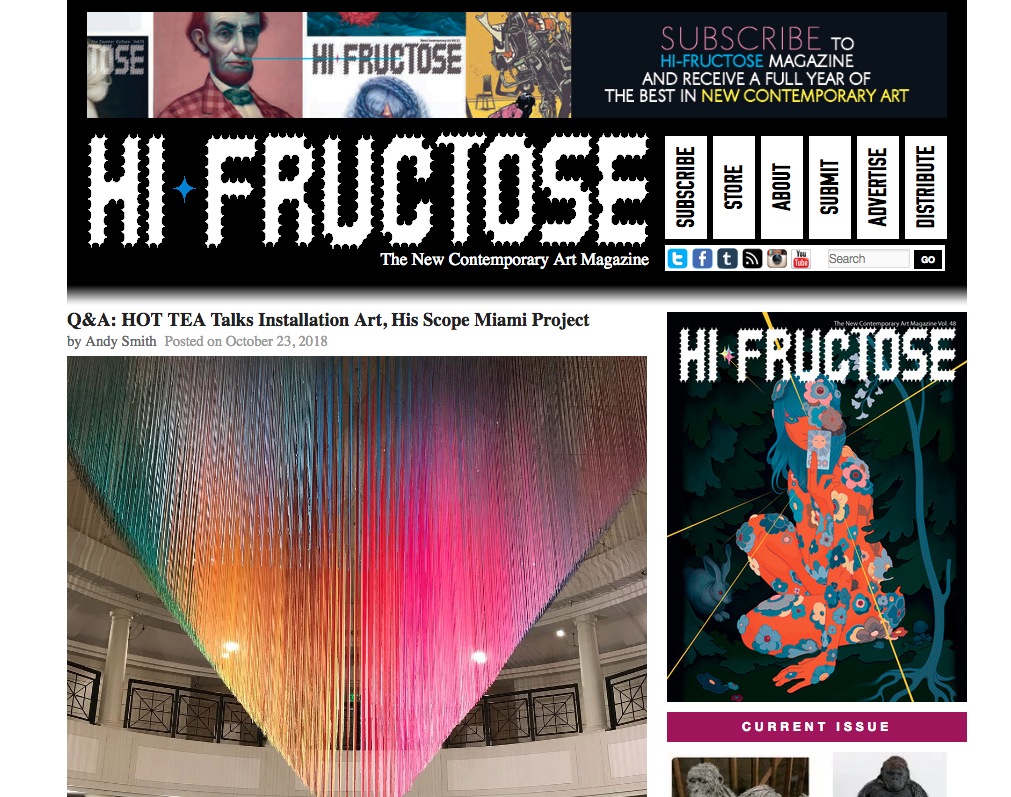
If you cannot think about the topics to write about, think this way – you are passionate about one thing in your life. Art. Yet, what about art makes you light up in particular?
Write about the things that are your art expertise or passion.
Is it renaissance? Is it impressionism? Is it use of a certain painting technique? Really, it can be anything. Think about your blog as the way to help people get to know you.
Write about the things around you.
You can write about the latest art exhibitions, you can create an art-news commentary, or you can even talk about social and political topics and tie them into your art. You can create listicles of your favorite works.
This way, you can backlink to other artists’ websites and they could do the same for you. In time, you may want to write guest blogs for other artists or have them do the same thing for you – that way, you can drive traffic to each other’s blogs.
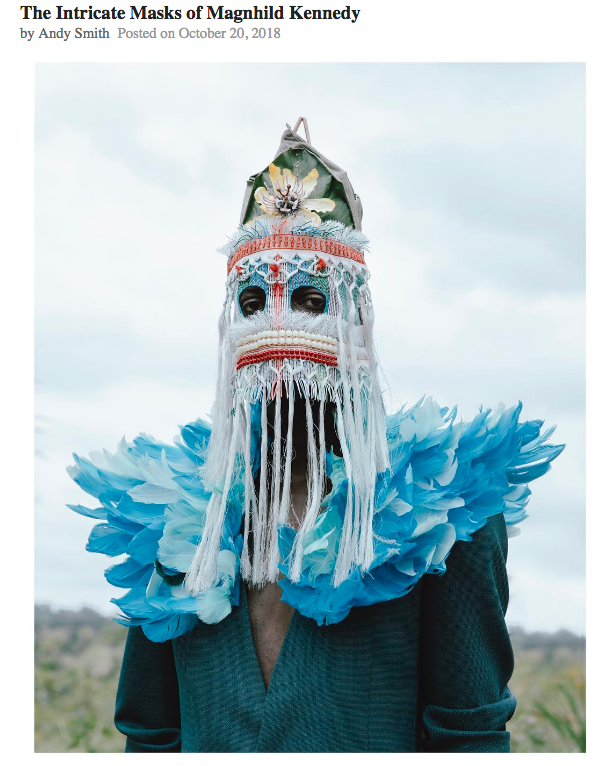
If you think you wrote a particularly good piece where you mention an influential artist, you can craft an outreach email to this person and ask them if they would be willing to share it.
Write something that can be useful to others
You can create tutorials or educational content – even in the form of videos. This content doesn’t have to be reserved strictly for artists – there are people out there who may want to start a new hobby.
Along the way, they can fall in love with your artwork. Here you can find a guide on how to start a YouTube channel and create content that can reach the top of Google rankings. You can incorporate these videos in your blog posts or share them directly on social networks.
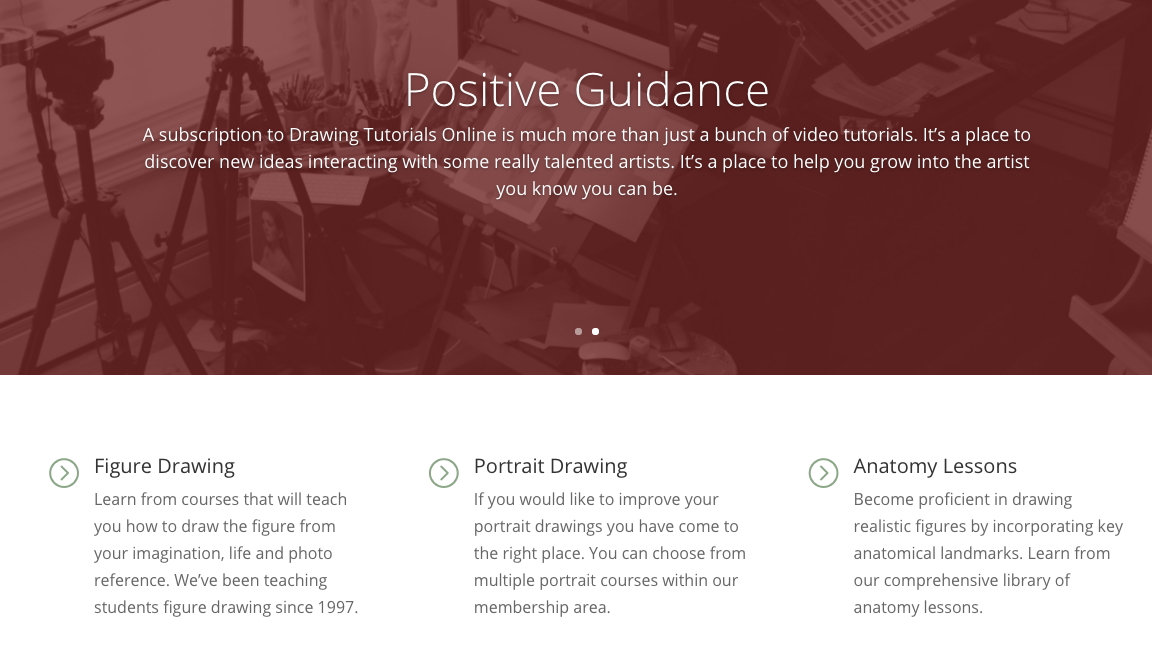
Share your blog posts on social networks
Try to blog regularly – you don’t have to create 10 pieces of content weekly. Just be consistent – if you publish on Tuesdays, try your best to stick to it. This way, you will build expectations among your audience. Some of them will be eager to read what’s new!
If people comment on your work, reply to their comments and engage in conversation. This can, in turn, give you new ideas.
Connect with other bloggers
But think about it in the opposite direction as well – work on getting written about. Are there any art bloggers you follow and appreciate? Submit your work for their review. This can also help you drive traffic to your website and blog.
Tool: WordPress
My top suggestion is WordPress, and not only because it is a leading blogging platform, but also because it incorporates an online shopping platform. This way, you can neatly keep your blog and online shop in the same place for a fairly low price. If you want to learn more about blogging monetization, then I highly recommend you to check out Ryan Robinson’s guide that explains how to make money blogging.
Step 4 – Nail down SEO
The artistic expression and writing about the topics you are passionate about is great, but when you do that, you still have to play by some rules. This way, you will be able to boost your organic reach. When people google a certain keyword, such as “sunset painting canvas,” your blog post, video, online store or artwork will be among the top search results.
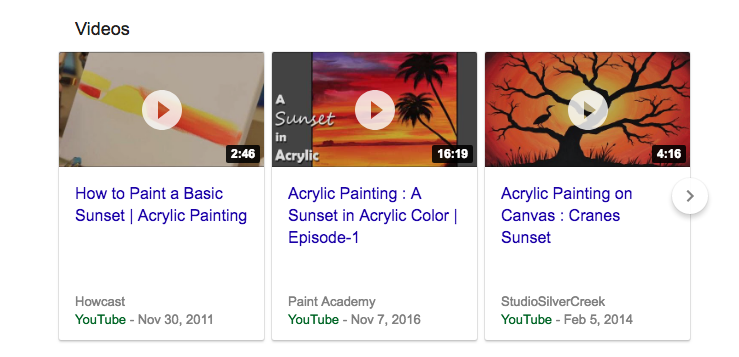
But Shopify SEO can be a tricky science and adjusting your website pages and blog posts with algorithm-pleasing headings, titles, descriptions and keywords may seem like a daunting task. The gist of the whole process is to have your website connected to keywords that accurately describe the site content and match with people’s search queries about art.
But even though you do it right once, the way Google ranks your website changes on a weekly basis. The health of your website depends on many factors, including the health of the websites you are linking to. This is why having an effective SEO audit tool is of utmost importance for ranking high on Google.
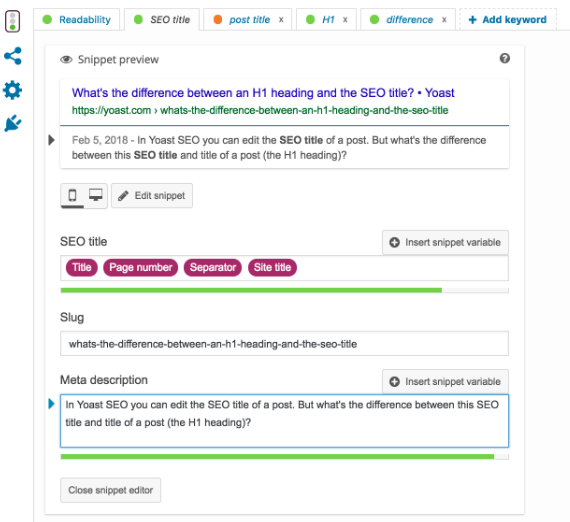
WordPress has a built-in SEO tool Yoast that can help you optimize your entire website, as well as your blog posts. But if you are interested in getting neck deep in playing with SEO, you may want to try some more advanced tools or strategies.
One of these strategies is letting keywords guide you through the topic selection process. Long story short, you can look for art-related keywords with a high search volume (for example, more than 1000 searches per month) and low keyword difficulty – which means that you don’t need to receive a lot of backlinks to rank high on Google. Check it out here.
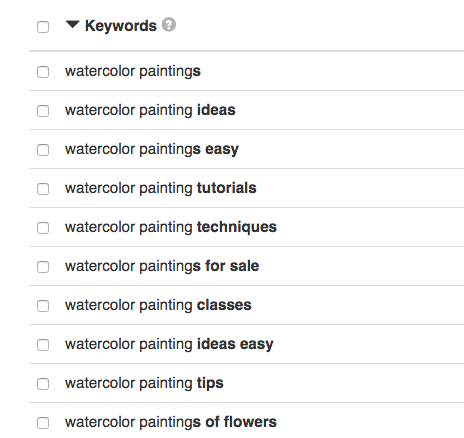 Tool: SEMrush, Ahrefs
Tool: SEMrush, Ahrefs
And mind it, there are free tools for keyword research – in this article I wrote about YouTube keyword tools, but most of them work for any other platform.
Step 5 – Grow your email list
One of the most effective ways to connect with a targeted audience that is highly likely to purchase your artwork is growing your email list. This way, you are talking to people who expressed interest in what you have to say by subscribing to your newsletter. But how do you lead them to that point?
Social networks – Quizzes
Believe it or not, quizzes have been insanely effective for capturing contacts, both on your website or social networks. Here, you can find testimonials from people from various business niches.
Yes, I know what you may be thinking – that quizzes may be too banal for your taste or your audience. However, if you want to reach a lot of people, don’t presume that people who aren’t art aficionados cannot become interested in art. Actually, this whole strategy is crafted to catapult you beyond tight-knit circles and help you offer something of substance to a larger audience.

So, your quizzes may take a more serious turn by challenging people to test their knowledge about art. They can be fun and playful, for example – do this quiz and we’ll tell you which painting should hang in your living room.
Or – which contemporary artist are you? The result can contain a piece of your blog content and link, it can lead people directly to your blog post or website – the options are endless.
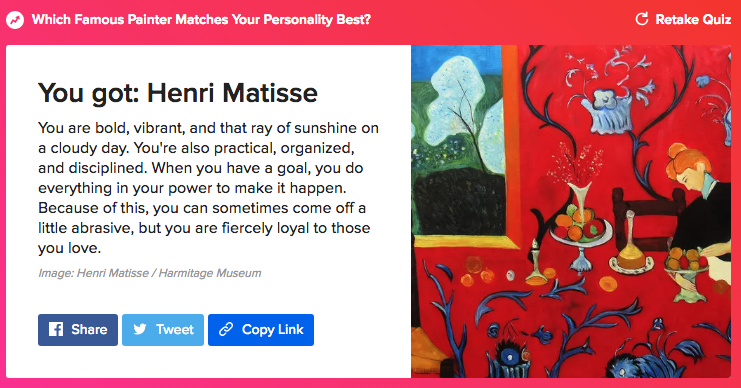
But quizzes are not only helpful with getting contacts – they can also help you segment your audience based on their answers and preferences.
The quizzes can be embedded on your website or ran as an ad on Facebook, Twitter or Instagram.
Tool: LeadQuizzes
If you want to give it a try, you can find a free 14-day trial here.
Your website – Pop up windows
A simple hello bar or pop-up window that shows up as people explore your website can help you gather email addresses from your art store visitors. These pop-ups are even more effective if you offer people something in return for their subscription. For example, you can ask them to leave their email in order to receive a booklet or tutorial you prepared or a mini-print of your favorite artwork.
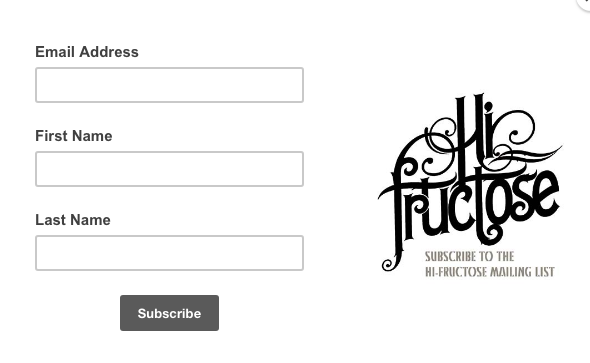
Tool: Hello bar, OptinMonster
There are plenty or free and paid tools that can optimize your website with timely and effective pop-ups and bars. Here you can read about your options for hello bar, and here is a detailed guide on various types of pop-ups that can fire up up your art shop sales.
Send a newsletter
A newsletter is a periodically sent bulletin used to inform your audience about your new artwork, events, or news relevant to their interests. This is a great way to to keep people engaged with you and your work. Here you will learn how to make an effective newsletter that will keep your audience on their toes rather than boring them into unsubscription.
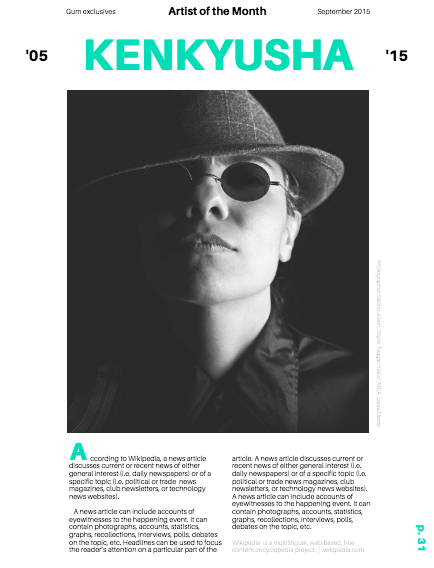
Tool: Canva
Canva is a fantastic tool for creating newsletters, as well as marketing materials for all social networks. It has thousands of pre-designed templates for newsletters, blog post covers, Facebook or Instagram ads, event covers, etc.
You can easily incorporate your logo, fonts and color palette into templates or create something from scratch – helping you maintain strong visual branding.
Sometimes…advertise
Apart from sending a newsletter (whose purpose is to inform and engage, NOT sell), it is ok to engage in email marketing as well. New blog posts, sales, and discounts are always a good reason to contact your subscribers – as long as you are not spamming their inbox. Include your portfolio as a regular attachment to your sales emails.
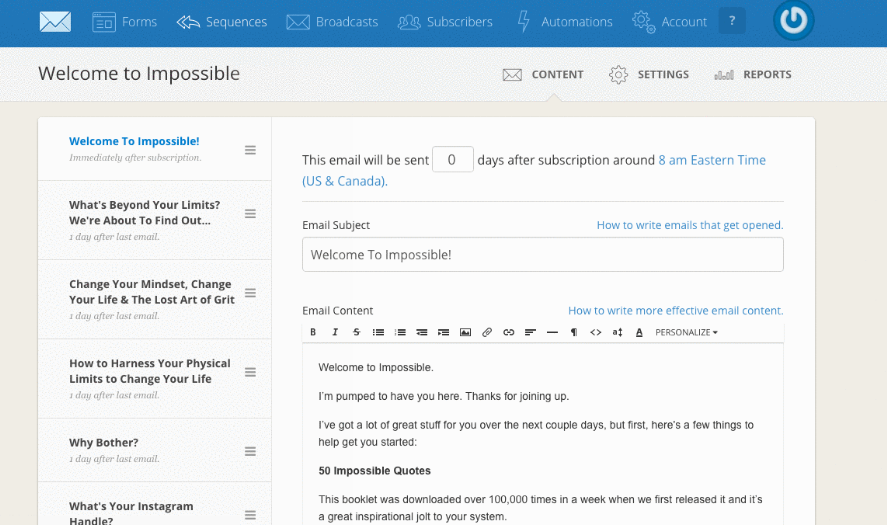
Tool: ConvertKit + Canva
ConvertKit is probably the most popular marketing automation software that enables you to customize your emails and automatically send each version to customized audience groups. The software also tracks people’s interaction with your emails. However, there are alternatives to ConvertKit, you can find them here.
Step 6 – Get (just a little bit) sales-y
Ultimately, you want people to purchase your artwork, so sometimes, when they are nearing the end of your sales funnel, you’ll want to nudge them in a way that doesn’t feel too pushy.
Reward loyalty
I previously mentioned pop-ups. Apart from gathering contacts, pop-ups can also help your customers make up their mind or come back another time. This is how you can offer your website visitors giveaways, gift certificates, discounts, free shipping. For those who purchase something, you can use a referral program, rewarding people who bring your new customers with gifts or even a percentage of your sales.
Tool: OptinMonster
Actively seek feedback
Analytics is a mother of a successful marketing strategy – and they are readily available to anyone with a website. However, once you notice certain patterns, you can employ tools that track website visitor behavior and react to them accordingly. For example, you can create a pop-up survey for a customer who is abandoning the shopping cart, asking why they gave up on the purchase.
Send a follow-up email to those who purchase your artwork and ask for their feedback. This way you will nurture a fan-base and be able to correct your mistakes along the way.
Tool: LeadQuizzes, OptinMonster
Conclusion
You may have noticed that all of these tools come with a price tag. However, most of them have free or cheap plans that are sufficient for a beginner. Following the guides I provided throughout this article, you can decide on your own how to sell art online and which tools you’d like to use.
If you are an artist trying to find your place in the virtual sphere, you may feel overwhelmed by the number of things and tricks you need to know. Don’t worry, all of that is part of a natural learning curve.
There is no one-size-fits-all solution when you’re trying to figure out how to sell art online. Look into this guide as a source of guidance, and through trial, error and some research, you’ll be able to grow your online art sales.